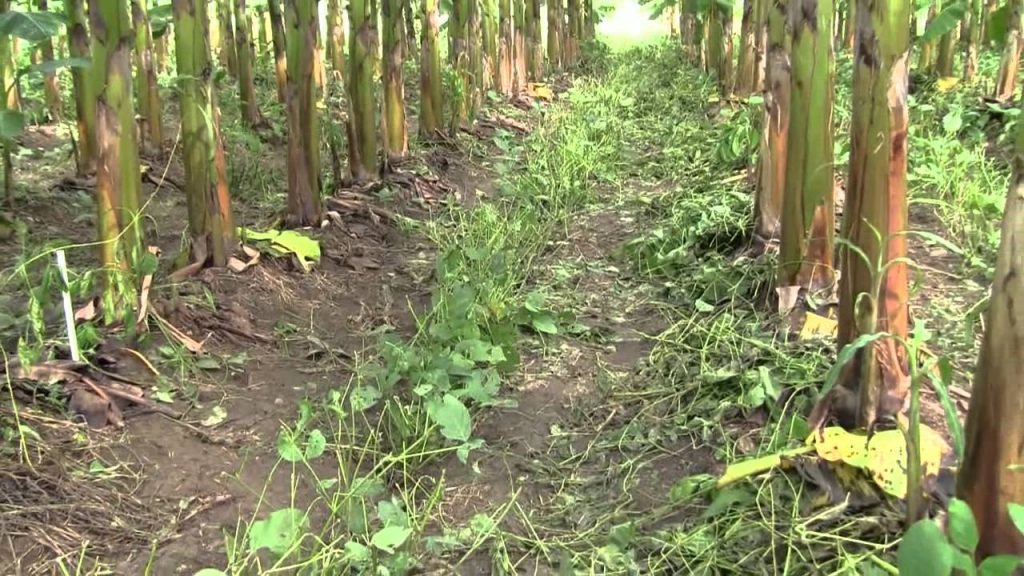Diversification of cropping systems to improve national food security
DOI:
https://doi.org/10.54502/msuceva.v3n2a7Palabras clave:
Agricultural systems, crops diversity, food security, open database, yieldResumen
The aim of this reflection is to study and promote the diversification of cropping systems as a strategy for the improvement of food security at national level. Food security is a global challenge that nations continue to address. Agricultural systems should address this issue; however, traditional practices may not be sufficient to produce enough food for the growing population. Conversely, intensive agriculture has significantly impacted the environment by increasing the use of fertilizers and freshwater, expanding cultivation lands, and reducing biodiversity. Therefore, innovative techniques are necessary to enhance agricultural productivity while respecting planetary environmental limits that are essential for the resilience of the earth. Enhancing cropping diversity in agricultural systems could significantly increase yield and food production, optimizing land usage efficiency. This brief analysis examines the diversity of crop species in Colombia from 2006 to 2022 and its impact on agricultural production. National crop diversity has increased over time, with higher heterogeneity observed in regions such as Cundinamarca, Boyacá Antioquia, Santander, Nariño, and Valle del Cauca. Additionally, significant correlations exist between the number of crops cultivated per location and agricultural production, emphasizing the significance of diversity in food systems. Increasing crop diversity can not only improve national food security but also aid in maintaining ecosystem integrity. Further research should focus on assessing the impact of various farming system diversification, approaches on yield stability and food security at the farm level
Descargas
Métricas
Citas
Galeana-Pizaña JM, Couturier S, Figueroa D, Jiménez AD. Is rural food security primarily associated with smallholder agriculture or with commercial agriculture? An approach to the case of Mexico using structural equation modeling. Agric Syst 2021;190:103091.
https://doi.org/10.1016/j.agsy.2021.103091 DOI: https://doi.org/10.1016/j.agsy.2021.103091
Gerten D, Heck V, Jägermeyr J, Bodirsky BL, Fetzer I, Jalava M, et al. Feeding ten billion people is possible within four terrestrial planetary boundaries. Nat Sustain 2020;3:200–8. https://doi.org/10.1038/s41893-019-0465-1 DOI: https://doi.org/10.1038/s41893-019-0465-1
Wang J, Vanga S, Saxena R, Orsat V, Raghavan V. Effect of climate change on the yield of cereal crops: A review. Climate 2018;6:41. https://doi.org/10.3390/cli6020041 DOI: https://doi.org/10.3390/cli6020041
Borsellino V, Schimmenti E, El Bilali H. Agri-Food markets towards sustainable patterns. Sustainability 2020;12:2193.
https://doi.org/10.3390/su12062193 DOI: https://doi.org/10.3390/su12062193
Alexander P, Rounsevell MDA, Dislich C, Dodson JR, Engström K, Moran D. Drivers for global agricultural land use change: The nexus of diet, population, yield and bioenergy. Global Environmental Change 2015;35:138–47. https://doi.org/10.1016/j.gloenvcha.2015.08.011 DOI: https://doi.org/10.1016/j.gloenvcha.2015.08.011
Tamburini G, Bommarco R, Wanger TC, Kremen C, van der Heijden MGA, Liebman M, et al. Agricultural diversification promotes multiple ecosystem services without compromising yield. Sci Adv 2020;6. https://doi.org/10.1126/sciadv.aba1715 DOI: https://doi.org/10.1126/sciadv.aba1715
Ali A, Bhattacharjee B. Nutrition security, constraints, and agro-diversification strategies of neglected and underutilized crops to fight global hidden hunger. Front Nutr 2023;10. https://doi.org/10.3389/fnut.2023.1144439 DOI: https://doi.org/10.3389/fnut.2023.1144439
Egli L, Schröter M, Scherber C, Tscharntke T, Seppelt R. Crop diversity effects on temporal agricultural production stability across European regions. Reg Environ Change 2021;21:96. https://doi.org/10.1007/s10113-021-01832-9 DOI: https://doi.org/10.1007/s10113-021-01832-9
Renard D, Tilman D. National food production stabilized by crop diversity. Nature 2019;571:257–60. https://doi.org/10.1038/s41586-019-1316-y DOI: https://doi.org/10.1038/s41586-019-1316-y
Driscoll AW, Leuthold SJ, Choi E, Clark SM, Cleveland DM, Dixon M, et al. Divergent impacts of crop diversity on caloric and economic yield stability. Environmental Research Letters 2022; 17:124015. https://doi.org/10.1088/1748-9326/aca2be DOI: https://doi.org/10.1088/1748-9326/aca2be
Auffhammer M, Carleton TA. Regional Crop Diversity and Weather Shocks in India. Asian Dev Rev 2018;35:113–30. https://doi.org/10.1162/adev_a_00116 DOI: https://doi.org/10.1162/adev_a_00116
LaFevor MC. Crop species production diversity enhances revenue stability in low-income farm regions of Mexico. Agriculture 2022; 12:1835. https://doi.org/10.3390/agriculture12111835 DOI: https://doi.org/10.3390/agriculture12111835
LaFevor MC. Spatial and temporal changes in crop species production diversity in Mexico (1980–2020). Agriculture 2022;12:985. https://doi.org/10.3390/agriculture12070985 DOI: https://doi.org/10.3390/agriculture12070985
Sistema de información sobre Biodiversidad de Colombia-SIB. Biodiversidad de Colombia en el mundo. Colombia es el tercer país con mayor biodiversidad en el mundo. Cifras de Biodiversidad 2023. https://cifras.biodiversidad.co/
Agronet MinAgricultura. Estadísticas agropecuarias. Red de Información y Comunicación Del Sector Agropecuario Colombiano 2023. https://www.agronet.gov.co/Paginas/inicio.aspx
Urbanek S. The R Quest: from users to developers. R J 2021;13:697. https://doi.org/10.32614/RJ-2021-111 DOI: https://doi.org/10.32614/RJ-2021-111
Wickham H. ggplot2. vol. 1. Cham: Springer International Publishing; 2016. https://doi.org/10.1007/978-3-319-24277-4 DOI: https://doi.org/10.1007/978-3-319-24277-4
Piepho H ‐P. Methods for comparing the yield stability of cropping systems. J Agron Crop Sci 1998;180:193–213.
https://doi.org/10.1111/j.1439-037X.1998.tb00526.x DOI: https://doi.org/10.1111/j.1439-037X.1998.tb00526.x
Chopin P, Menegat A, Bergkvist G, Dahlke S, Jäck O, Karlsson I, et al. The reflection of principles and values in worldwide organic agricultural research viewed through a crop diversification lens. A bibliometric review. Agron Sustain Dev 2023;43:23.
https://doi.org/10.1007/s13593-023-00875-y DOI: https://doi.org/10.1007/s13593-023-00875-y
Bamji MS, Murty PVVS, Sudhir PD. Nutritionally sensitive agriculture—an approach to reducing hidden hunger. Eur J Clin Nutr 2021;75:1001–9. https://doi.org/10.1038/s41430-020-00760-x DOI: https://doi.org/10.1038/s41430-020-00760-x
Seppelt R, Klotz S, Peiter E, Volk M. Agriculture and food security under a changing climate: An underestimated challenge. IScience 2022;25:105551. https://doi.org/10.1016/j.isci.2022.105551 DOI: https://doi.org/10.1016/j.isci.2022.105551

Descargas
Publicado
Cómo citar
Número
Sección
Licencia
Derechos de autor 2023 Parra Londoño

Esta obra está bajo una licencia internacional Creative Commons Atribución-NoComercial-SinDerivadas 4.0.
Magna Scientia UCEVA proporciona un acceso abierto, libre y gratuito a su contenido, basado en el principio de que ofrecer al público un acceso libre a las investigaciones, ayuda a un mayor intercambio global del conocimiento. Lo cual, implica que los usuarios pueden leer, descargar, almacenar, imprimir, buscar, indexar y realizar enlaces a los textos completos de esta revista. Se permite distribuir los diversos artículos en las versiones post-print y oficial, sin previo permiso del autor o editor, considerando que el fin de este, no implica fines comerciales, ni la generación de obras derivadas; Solo se solicita la mención de la fuente así como la autoría. El titular del copyright será el o los autores que publiquen en Magna Scientia UCEVA.
Magna Scientia UCEVA está distribuida bajo los términos de la licencia https://creativecommons.org/licenses/by-nc-nd/4.0/deed.es




















